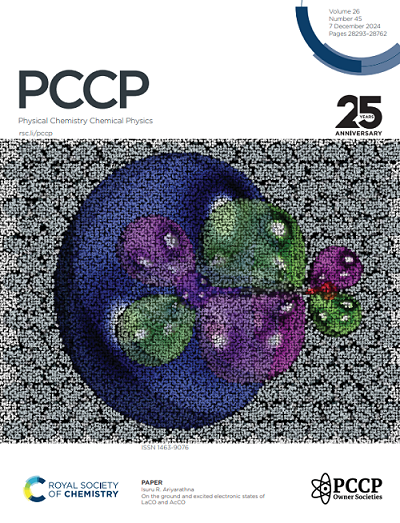Recent advances in circularly polarized luminescence (CPL) of chiral boron difluoride complexes
IF 2.9
3区 化学
Q3 CHEMISTRY, PHYSICAL
引用次数: 0
Abstract
Circularly polarized luminescence (CPL) has emerged as an intrigung photophysical phenomenon with potential applications in optoelectronics, bioimaging, and anti-counterfeiting materials. Among various CPL-active molecules, chiral boron difluoride complexes have attracted considerable attention due to their structural versatility, tunable emission properties and high luminescence efficiencies. This review summarizes recent progress in the design, synthesis, and photophysical properties of chiral boron difluoride complexes exhibiting CPL. We highlight key structural motifs, including boron-dipyrromethenes (BODIPYs), boron β-diketonates and boranils that have been successfully employed to induce efficient CPL activity. Moreover, we discuss the relationships between molecular structure and CPL performance, the mechanisms underlying CPL generation, and emerging strategies to improve emission efficiency and chiroptical properties. Finally, future perspectives are outlined with an emphasis on the challenges and opportunities in developing next-generation CPL-active materials based on boron difluoride frameworks.手性二氟化硼配合物圆偏振发光研究进展
圆偏振发光(CPL)是一种有趣的光物理现象,在光电子学、生物成像和防伪材料中具有潜在的应用前景。手性二氟化硼配合物因其结构通用性强、发射特性可调、发光效率高而受到广泛关注。本文综述了具有CPL活性的手性二氟化硼配合物的设计、合成和光物理性质方面的最新进展,重点介绍了已成功用于诱导CPL活性的关键结构基序,包括硼-二吡咯烯(BODIPYs)、硼β-二酮酸酯和硼烷。此外,我们还讨论了分子结构与CPL性能之间的关系,CPL产生的机制,以及提高发射效率和热学性能的新策略。最后,概述了未来的展望,重点是开发基于二氟化硼框架的下一代cpld活性材料的挑战和机遇。
本文章由计算机程序翻译,如有差异,请以英文原文为准。
求助全文
约1分钟内获得全文
求助全文
来源期刊

Physical Chemistry Chemical Physics
化学-物理:原子、分子和化学物理
CiteScore
5.50
自引率
9.10%
发文量
2675
审稿时长
2.0 months
期刊介绍:
Physical Chemistry Chemical Physics (PCCP) is an international journal co-owned by 19 physical chemistry and physics societies from around the world. This journal publishes original, cutting-edge research in physical chemistry, chemical physics and biophysical chemistry. To be suitable for publication in PCCP, articles must include significant innovation and/or insight into physical chemistry; this is the most important criterion that reviewers and Editors will judge against when evaluating submissions.
The journal has a broad scope and welcomes contributions spanning experiment, theory, computation and data science. Topical coverage includes spectroscopy, dynamics, kinetics, statistical mechanics, thermodynamics, electrochemistry, catalysis, surface science, quantum mechanics, quantum computing and machine learning. Interdisciplinary research areas such as polymers and soft matter, materials, nanoscience, energy, surfaces/interfaces, and biophysical chemistry are welcomed if they demonstrate significant innovation and/or insight into physical chemistry. Joined experimental/theoretical studies are particularly appreciated when complementary and based on up-to-date approaches.
 求助内容:
求助内容: 应助结果提醒方式:
应助结果提醒方式:


